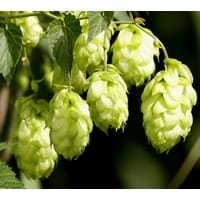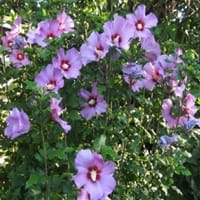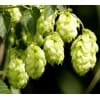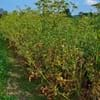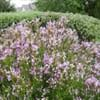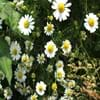Life Span
Perennial
Perennial
Origin
North America, Europe, Western Asia
Australia
Types
lupulus , cordifolius , lupuloides , neomexicanus , pubescens
Not available
Number of Varieties
Not Available
Habitat
ditches, Lake margins
subtropical regions, Temperate Regions, Tropical regions, Warmer regions
USDA Hardiness Zone
4-8
9-11
Sunset Zone
A2, A3, 1a, 1b, 2a, 2b, 3a, 3b, 4, 5, 6, 7, 8, 9, 10, 14, 15, 16, 17, 18, 19, 20, 21
H1, H2, 13, 14, 15, 16, 17, 20, 21, 22, 23, 24
Habit
Vining/Climbing
Upright/Erect
Minimum Width
Not Available
Flower Color
Green, Magenta
Blue, Purple, Blue Violet
Flower Color Modifier
Bicolor
Not Available
Fruit Color
Tan
Not Available
Leaf Color in Spring
Chartreuse, Yellow green
Dark Green
Leaf Color in Summer
Dark Green, Light Yellow, Yellow green
Dark Green
Leaf Color in Fall
Yellow, Yellow green
Dark Green
Leaf Color in Winter
Light Green
Dark Green
Leaf Shape
Lobed and toothed
Irregular
Plant Season
Spring, Summer, Fall
Spring, Summer, Fall, Winter
Sunlight
Full Sun, Partial Sun
Full Sun
Type of Soil
Clay, Loam
Clay, Loam, Sand
The pH of Soil
Acidic, Neutral
Acidic, Neutral, Alkaline
Soil Drainage
Average
Well drained
Bloom Time
Summer
Indeterminate
Tolerances
Drought
Not Available
Where to Plant?
Ground
Ground, Pot
How to Plant?
Semi-hardwood cuttings, Softwood cuttings
Seedlings, Semi-hardwood cuttings
Plant Maintenance
Medium
Medium
Watering Requirements
Keep ground moist, Keep the Soil well drained
Average Water Needs, Do Not over Water, Requires regular watering
In Summer
Lots of watering
Lots of watering
In Spring
Moderate
Moderate
In Winter
Average Water
Average Water
Soil pH
Acidic, Neutral
Acidic, Neutral, Alkaline
Soil Type
Clay, Loam
Clay, Loam, Sand
Soil Drainage Capacity
Average
Well drained
Sun Exposure
Full Sun, Partial Sun
Full Sun
Pruning
In Early Autumn, Remove damaged leaves, Remove dead branches, Remove dead leaves
Remove damaged leaves, Remove dead branches, Remove dead leaves
Fertilizers
All-Purpose Liquid Fertilizer, General purpose fertilizer with an NPK ratio 3-1-2
All-Purpose Liquid Fertilizer
Pests and Diseases
Aphids, Japanese Beetles, Red spider mite
Red blotch, Rust aphids
Plant Tolerance
Drought
Not Available
Flower Petal Number
Not Available
Single
Foliage Texture
Medium
Medium
Foliage Sheen
Matte
Matte
Attracts
Beetles
Butterflies, Flying insects, Hummingbirds, Insects
Allergy
Unknown
Not Available
Aesthetic Uses
Cottage Garden, Farmland, Informal Hedge, Wild gardens
Borders, Showy Purposes, small hedge
Beauty Benefits
Not Available
Not Available
Environmental Uses
Air purification
Air purification
Medicinal Uses
anti bacterial, increase urine flow, Insomnia
High blood pressure, lowering blood pressure
Part of Plant Used
extracted oil, Flowers
Flowers, Leaves
Other Uses
brewing beer
Decoration Purposes
Used As Indoor Plant
No
Yes
Used As Outdoor Plant
Yes
Yes
Garden Design
Bedding Plant, Edible, Feature Plant, Herb / Vegetable, Rock Garden / Wall, Vine
Container, Feature Plant, Hedges, Mixed Border, Rock Garden, Wall
Botanical Name
HUMULUS lupulus 'Aureus'
ALYOGYNE huegelii 'Monle'
Common Name
Golden Hops
Blue Hibiscus, Purple Delight Blue Hibiscus
In Hindi
साधारण राज़क
Blue Hibiscus
In German
Echter Hopfen
Blauer Hibiskus Baum
In French
Houblon
Bleu Hibiscus Arbre
In Spanish
Humulus lupulus
Azul árbol del hibisco
In Greek
Golden Hop
Μπλε Hibiscus Tree
In Portuguese
Lúpulo
Árvore azul do hibiscus
In Polish
Chmiel zwyczajny
Niebieski Hibiscus Drzewo
In Latin
Golden Hop
Hibiscus lignum blue
Phylum
Magnoliophyta
Magnoliophyta
Class
Magnoliopsida
Magnoliopsida
Family
Cannabaceae
Malvaceae
Clade
Angiosperms, Eudicots, Rosids
Angiosperms, Eudicots, Rosids
Tribe
Not Available
Hibisceae
Subfamily
Not Available
Malvoideae
Number of Species
Not Available
Season and Care of Golden Hops and Blue Hibiscus
Season and care of Golden Hops and Blue Hibiscus is important to know. While considering everything about Golden Hops and Blue Hibiscus Care, growing season is an essential factor. Golden Hops season is Spring, Summer and Fall and Blue Hibiscus season is Spring, Summer and Fall. The type of soil for Golden Hops is Clay, Loam and for Blue Hibiscus is Clay, Loam, Sand while the PH of soil for Golden Hops is Acidic, Neutral and for Blue Hibiscus is Acidic, Neutral, Alkaline.
Golden Hops and Blue Hibiscus Physical Information
Golden Hops and Blue Hibiscus physical information is very important for comparison. Golden Hops height is 370.00 cm and width Not Available whereas Blue Hibiscus height is 120.00 cm and width 120.00 cm. The color specification of Golden Hops and Blue Hibiscus are as follows:
Golden Hops flower color: Green and Magenta
Golden Hops leaf color: Chartreuse and Yellow green
Blue Hibiscus flower color: Blue, Purple and Blue Violet
- Blue Hibiscus leaf color: Dark Green
Care of Golden Hops and Blue Hibiscus
Care of Golden Hops and Blue Hibiscus include pruning, fertilizers, watering etc. Golden Hops pruning is done In Early Autumn, Remove damaged leaves, Remove dead branches and Remove dead leaves and Blue Hibiscus pruning is done Remove damaged leaves, Remove dead branches and Remove dead leaves. In summer Golden Hops needs Lots of watering and in winter, it needs Average Water. Whereas, in summer Blue Hibiscus needs Lots of watering and in winter, it needs Average Water.
